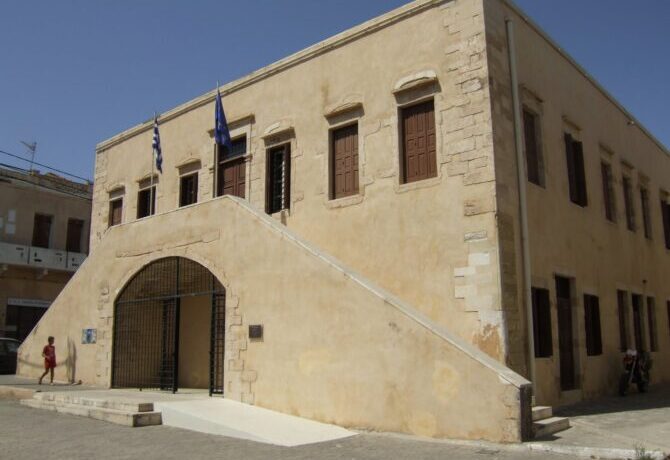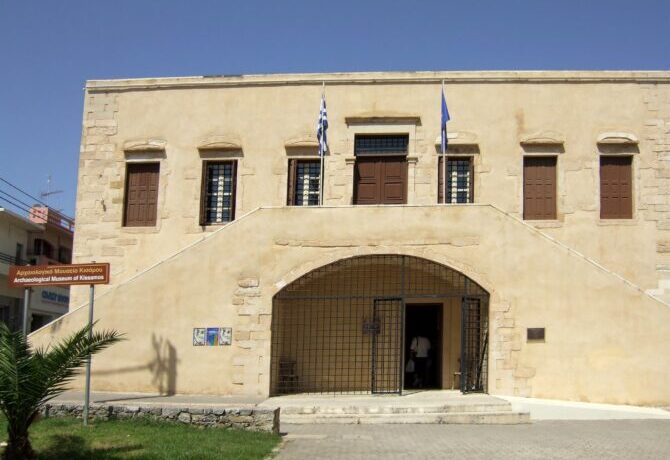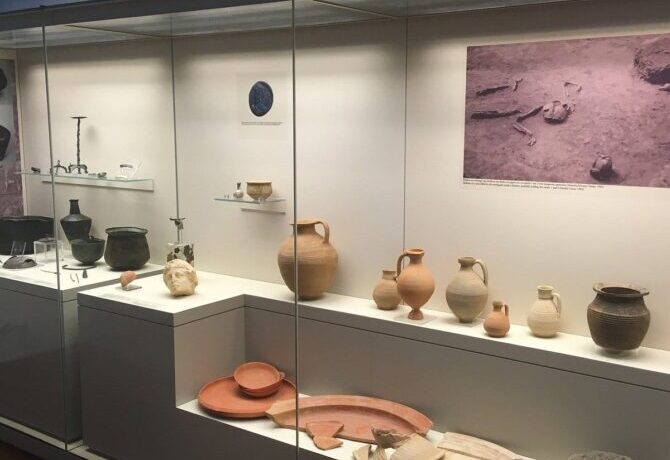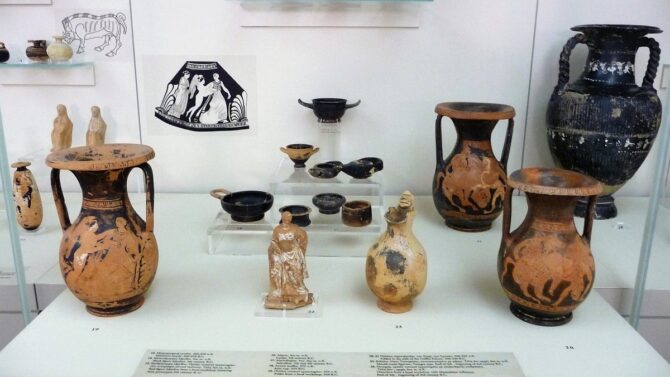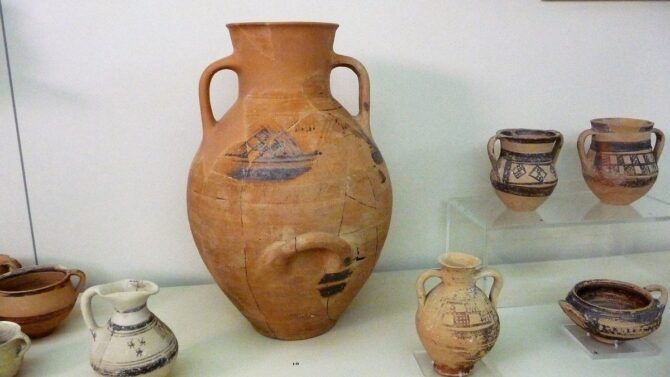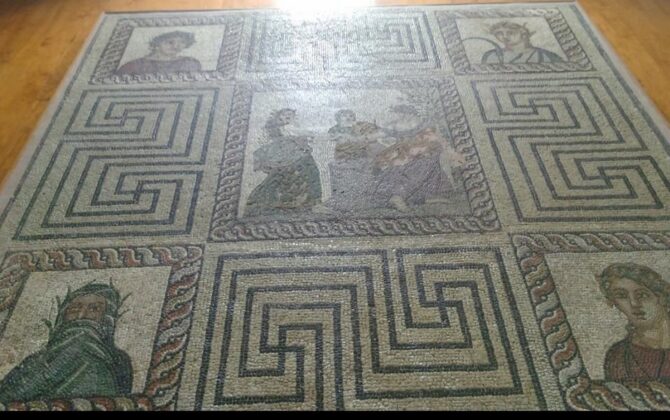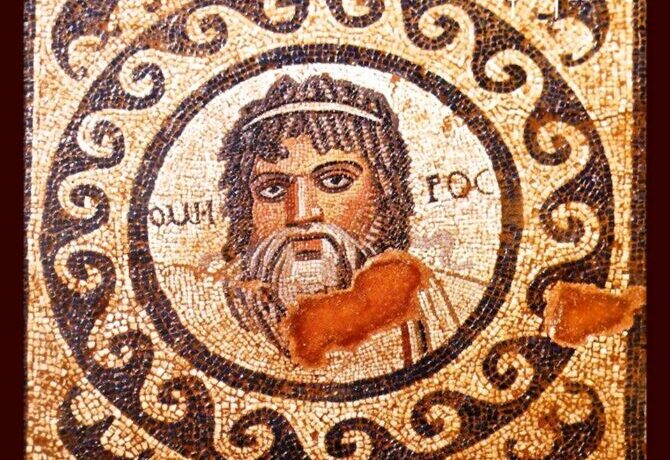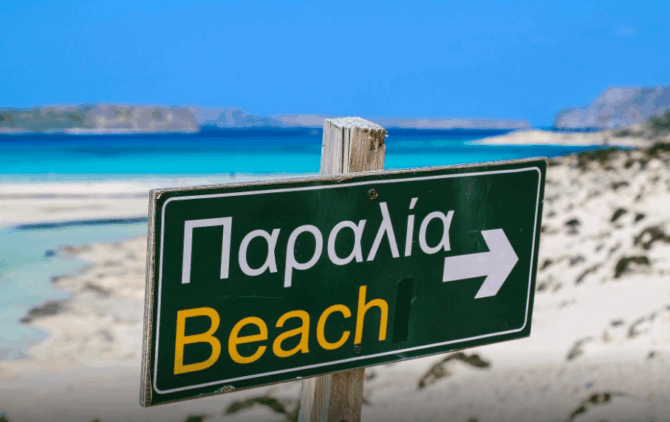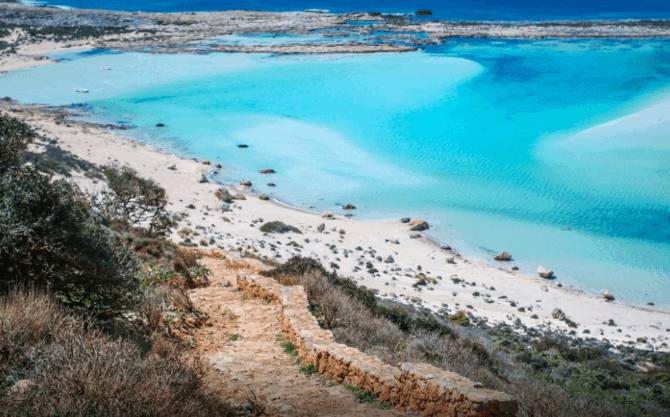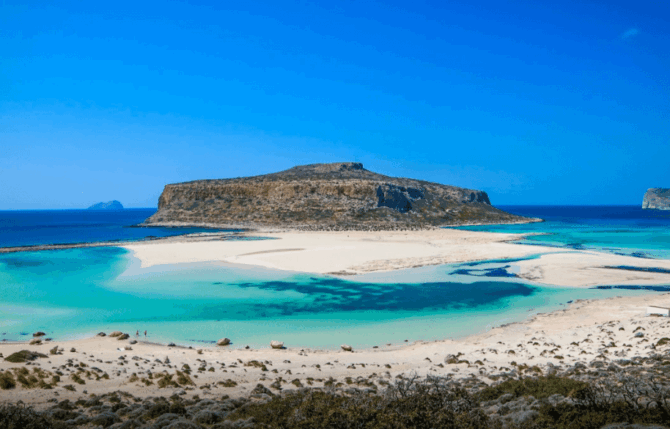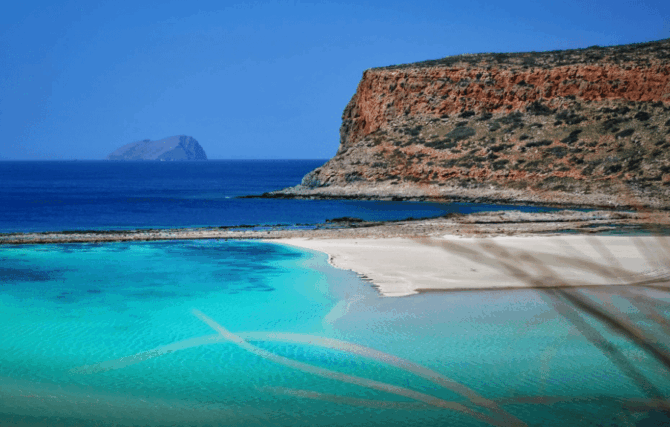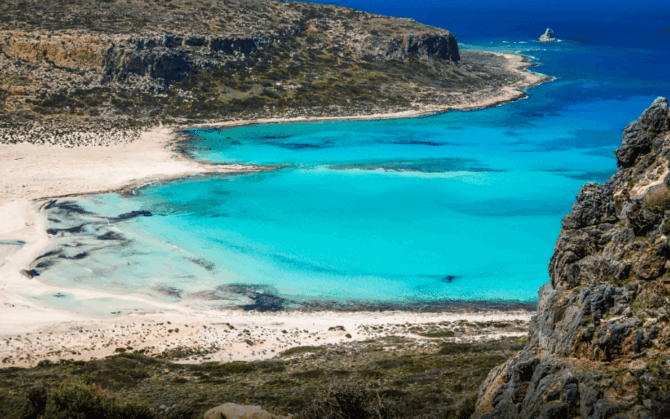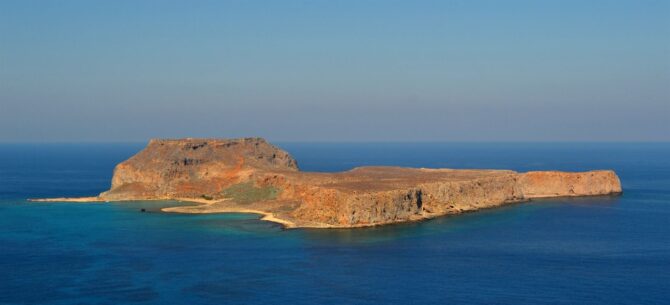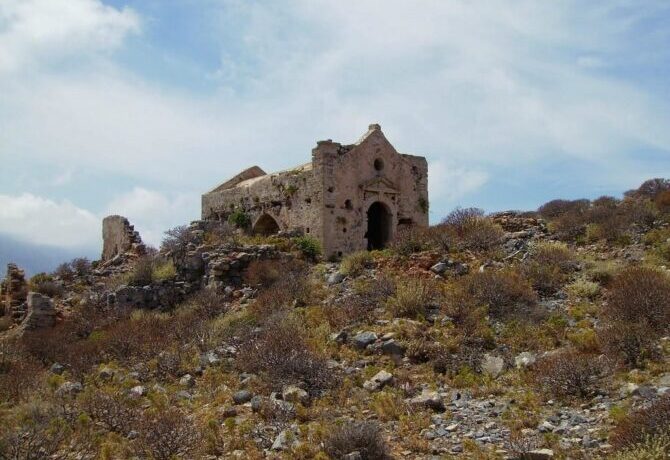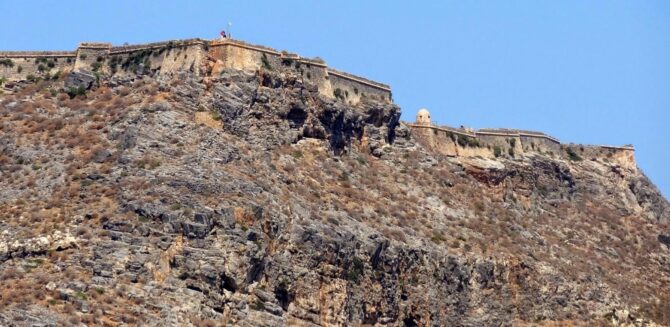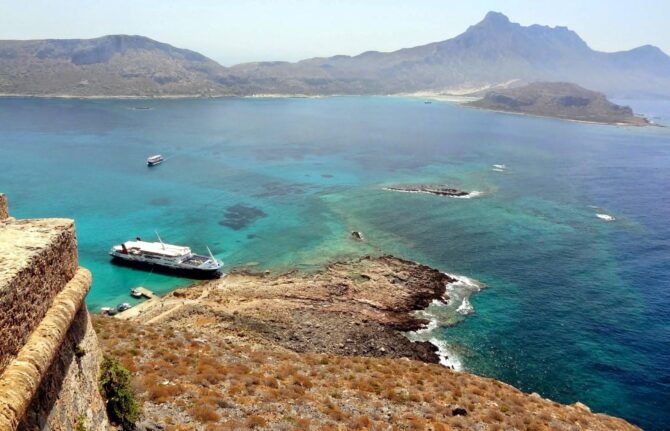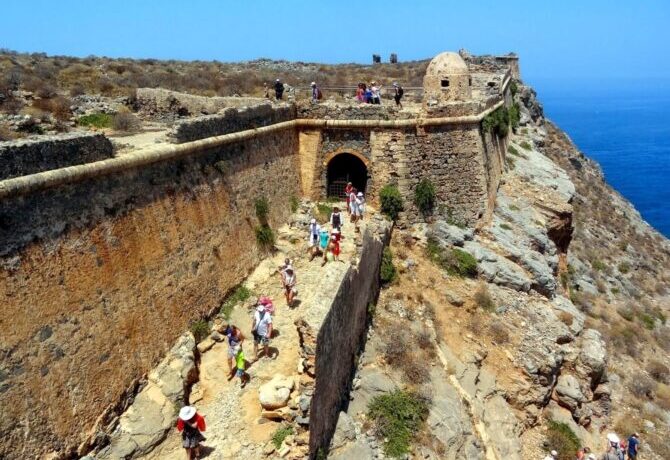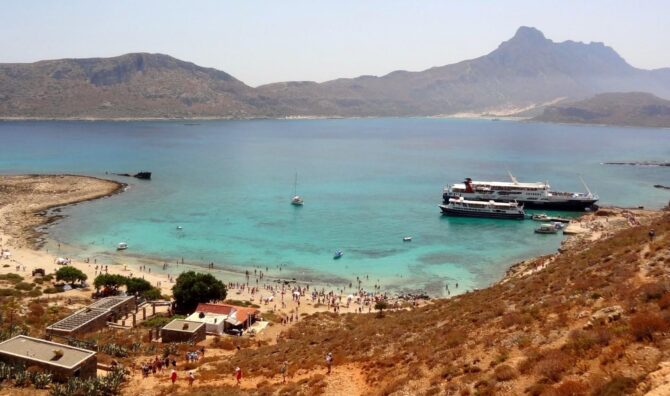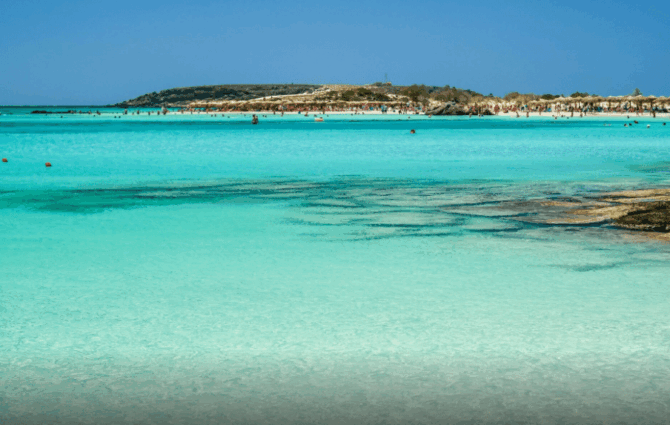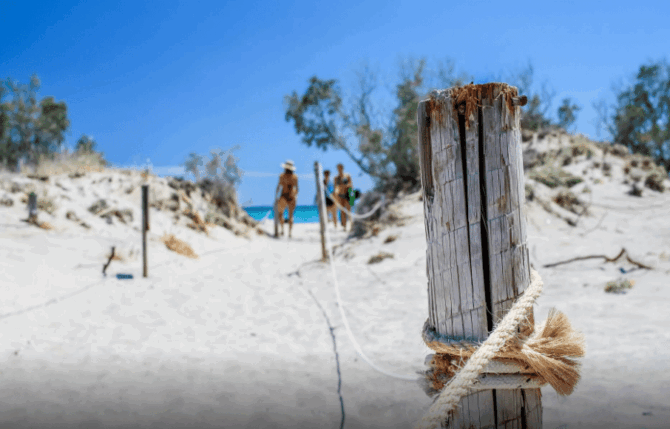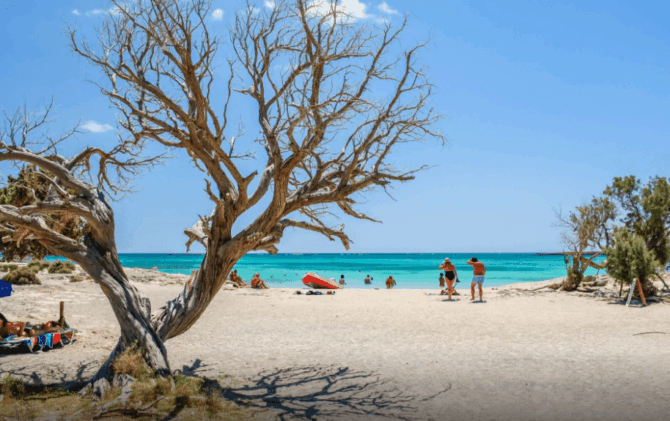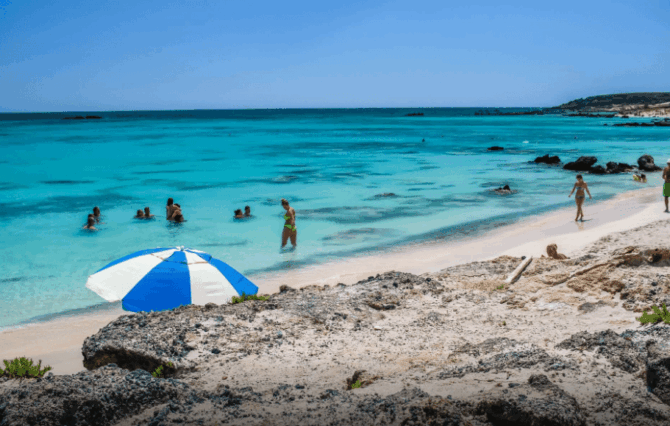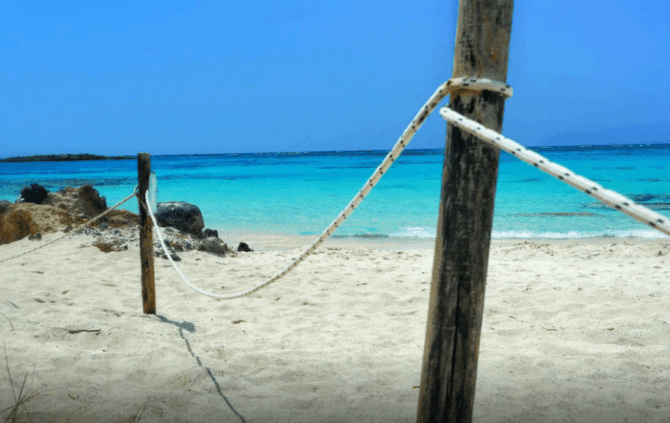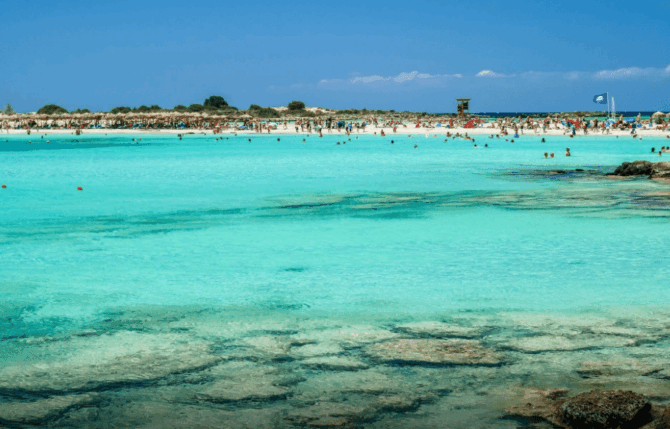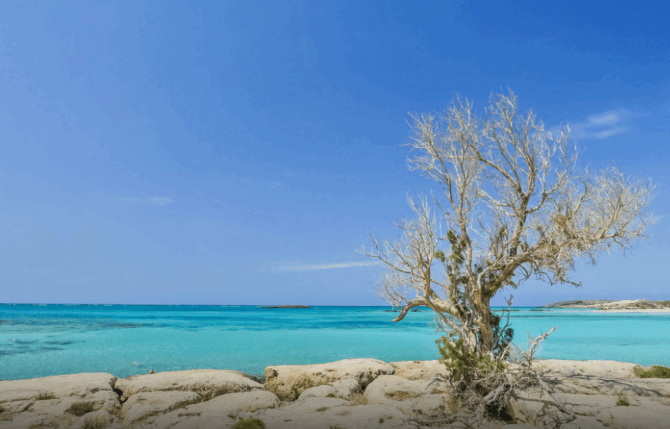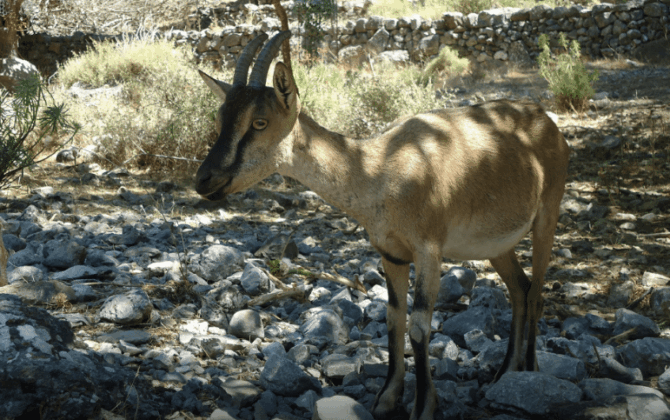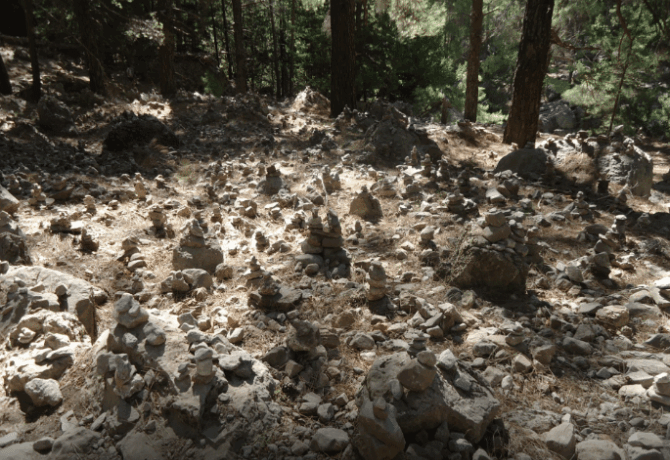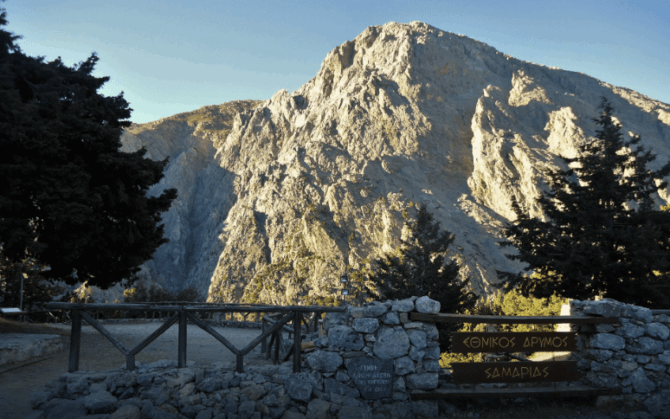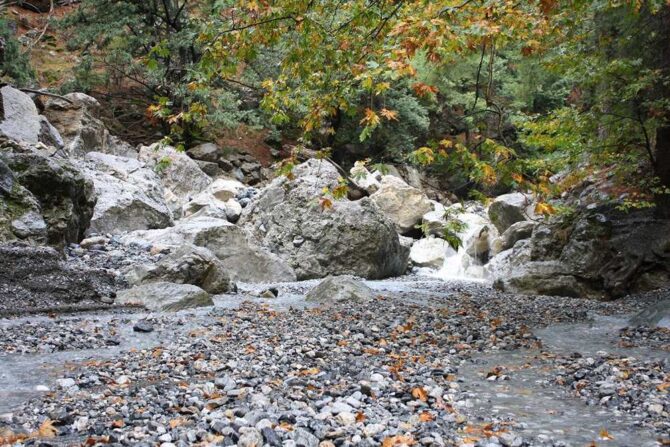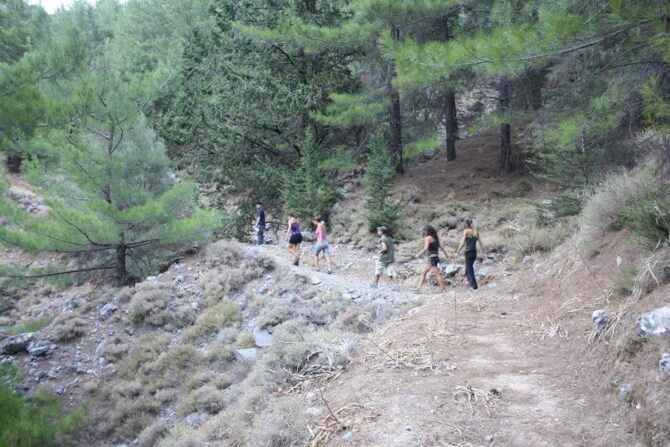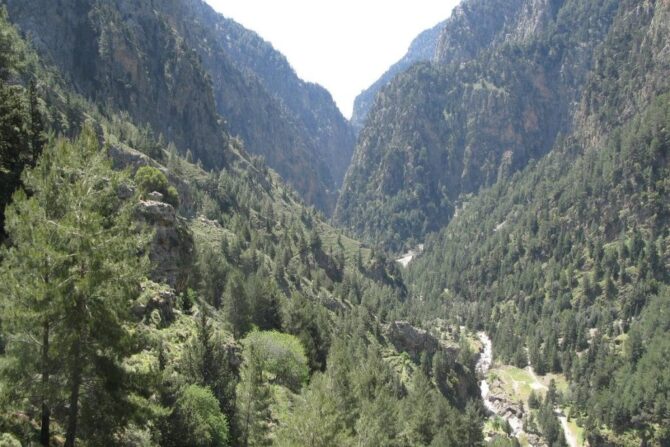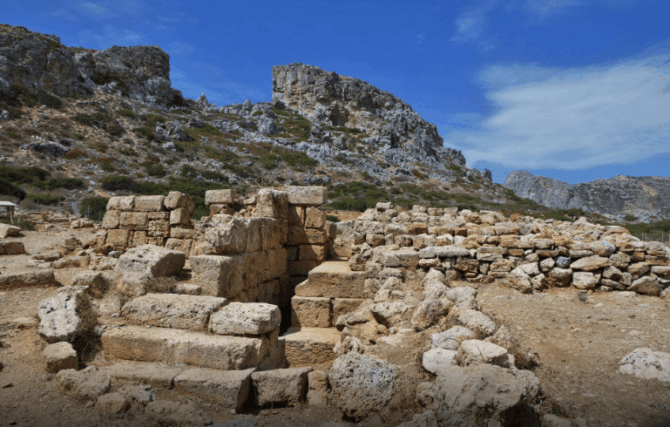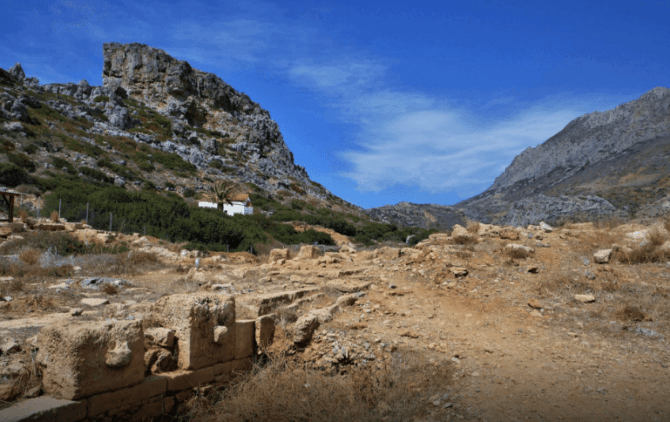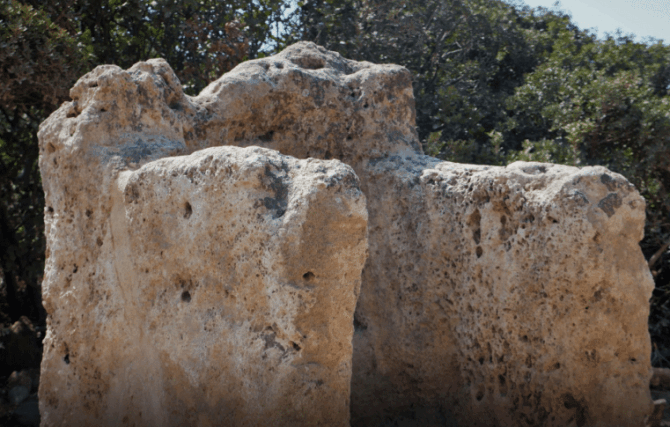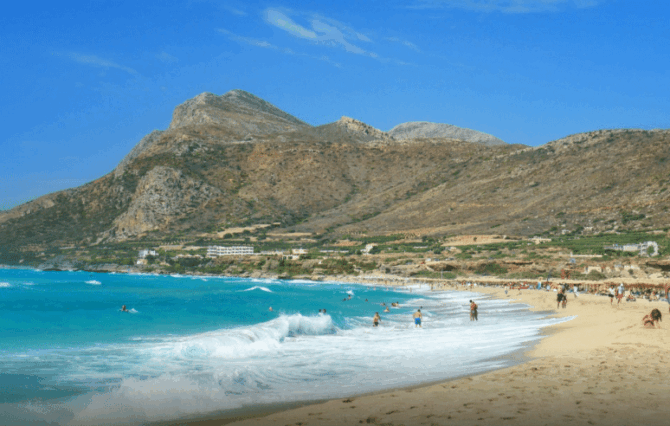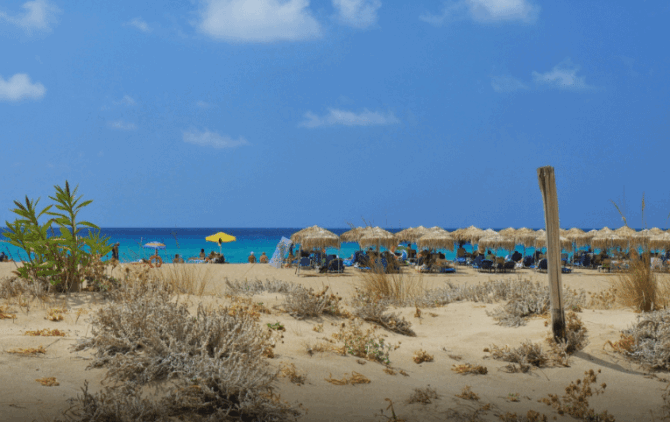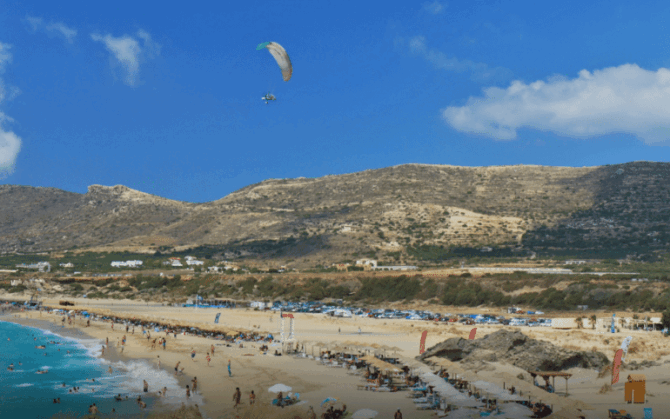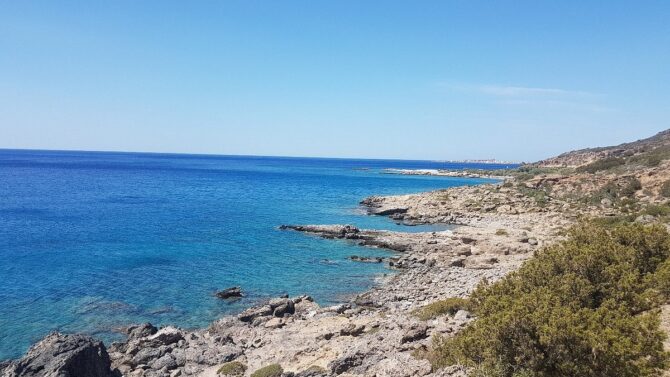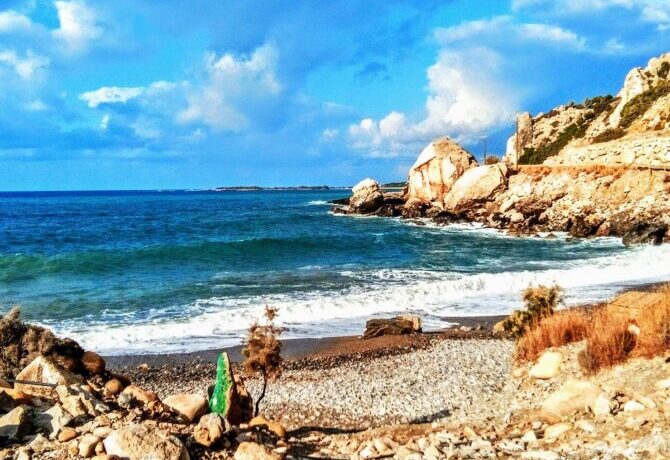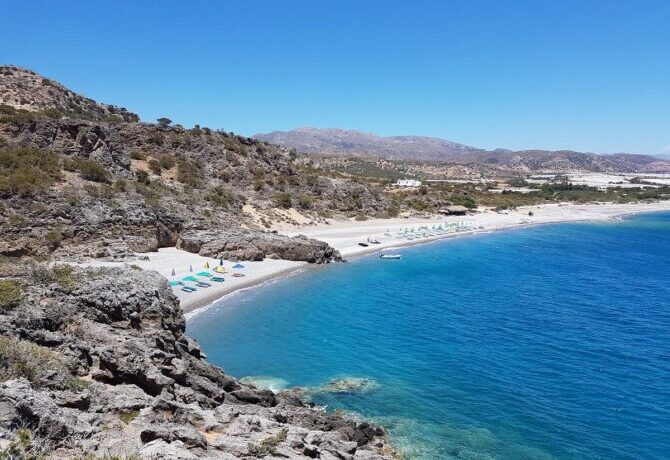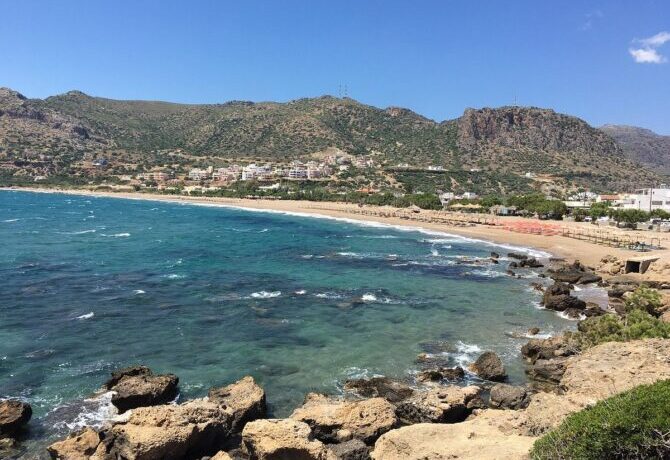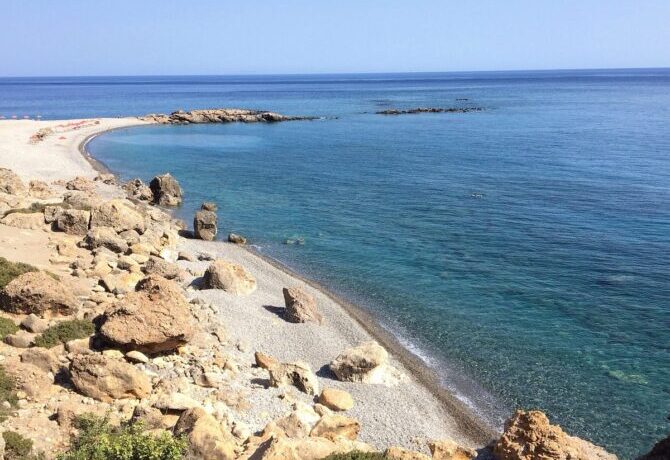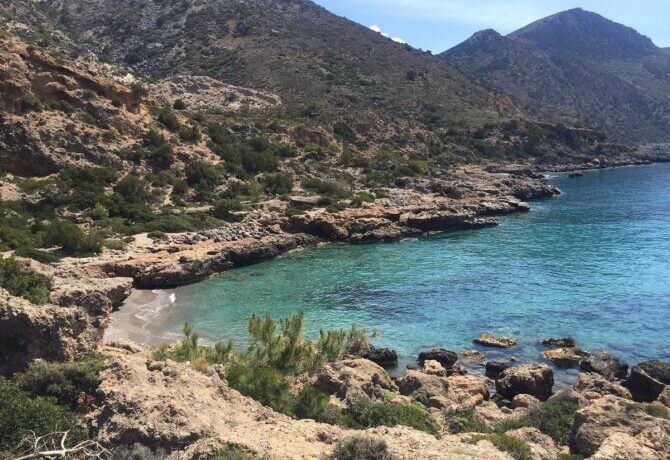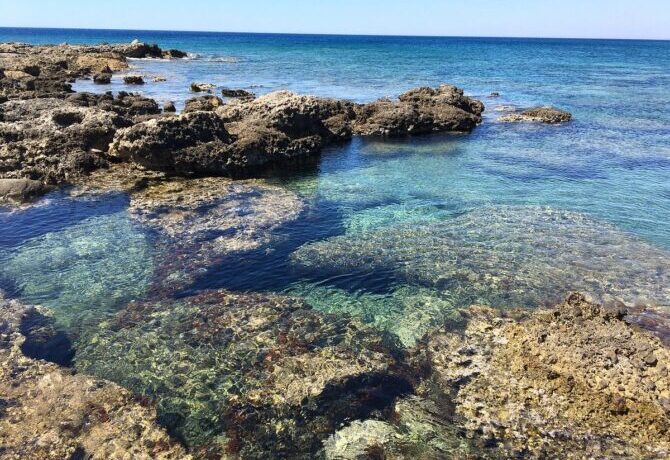The former fishing village of Kissamos not so long ago received the status of a city. Locals live off agriculture and tourism. For travelers, all types of housing, entertainment and goods are thought out here. Nearby there are exotic islands with cozy bays and lagoons, places of interest with an abundance of ancient artifacts. The history of Kissamos itself has about two thousand years. A special flavor in the design brought the Venetian era. In the city itself you can find the remains of Roman mosaic floors, statues, architectural decor. All rarities perfectly coexist with newfangled boutiques and restaurants, fashionable hotels fit well into the cityscape.
Attractions Kissamos on map
Archaeological Museum
The Archaeological Museum of Kissamos is a branch of the Ephorate of Antiquities of Chania. It is located in the building of the old Venetian-Turkish province, in the castle of Kasteli in Kissamos. The exposition of the museum is deployed on the first and second floors of the building. It is designed in such a way that the tour takes place through several periods of the formation of Ancient Greece, starting from the prehistoric era. Particular attention is paid to the Roman city of Kissamos, to which one of the floors is dedicated. The finds are presented in chronological order by collections collected from excavation artifacts and thematic units. Here is collected a lot of materials relating to the most destructive earthquake of antiquity, when the city was actually wiped off the face of the earth.
The fortress for all the time of existence was rebuilt several times. The very first fort in the territory of Kissamos was built by the pirate Henry Piscatore in the 13th century. In 1204, the Venetians expelled it from the citadel, fortified it and made it the central defensive point of the coast. It was destroyed several times. First, the Venetians themselves, when they left the island, then in 1538 It was done by Barbarossa, in 1595 – a powerful earthquake, in 1646 – by the Turks. Each time the fortress was restored, and it was again ready to protect Kissamos from enemies. Even today, the dilapidated walls impress tourists with their power and height. On the territory there are buildings built during the occupation of Crete by the Ottoman Empire.
Address: Kissamos, Chania Prefecture, Crete, Greece
Balos Lagoon
Balos Bay is one of the natural attractions of Crete. The lagoon is part of the bay and is considered one of the most beautiful places on the island. The main feature is that it mixes the waters of three seas at once – the Aegean, Libyan and Ionian. Despite the fact that they are all part of the Mediterranean basin, they differ from each other in the composition of salts, water temperature, and the color when mixed was formed absolutely fantastic. The territory is included in the environmental zone, so all types of production activities are prohibited. The beach is covered with pinkish sand. The gentle entrance to the sea and shallow water near the shore attract parents with children here.
The lagoon is home to several species of rare animals and birds. Chigloki nest here, big-headed turtles “caretta” lay eggs in the sand, bearded lambs, cormorants, individuals of monk seals live. The coast of the lagoon is covered with vegetation, 25 species of which grow only here, in Balos. At the bottom of the lagoon there are depressions overgrown with algae. They are home to about 2 thousand species of marine living beings. If you take with you accessories for scuba diving, you can observe their lives and arrange an entertaining photo shoot.
The lagoon has a good infrastructure: the beach is equipped with umbrellas and sunbeds, toilets are installed, there is an exit shop with food and drinks, a rental of pleasure catamarans and water slides. This is a very popular holiday destination. Every day hundreds of tourists come here from all over the island. Experienced travelers are advised to use the early morning to take seats on the beach or take photos of nature without the presence of people. The bay is 15 km from Kissamos.
Address: Chania Prefectory, Crete, Greece
Gramvusa Island
In the northern part of balos Bay is the island of Gramvusa. Or rather, there are two of them – Agria Gramvusa and Imeri Gramvusa. The first is of little interest, and excursions to Imeri are regularly sent to get acquainted with local attractions. In 1584, in the western part of the island at an altitude of 130 m, the Venetians built a fortress, which performed a defensive function for the entire coast and guarded the Andikitira Strait. When Crete was threatened with occupation by the troops of the Ottoman Empire, the fortress of Gramvusa, along with the forts of Souda and Spinalonga, resisted for a long time until it was taken due to the betrayal of the commandant. This happened in early 1692.
In 1825, the Cretans conquered the fortress on the island of Gramvousa from the Turks, but a few years later returned it back. The rebels had to engage in piracy to feed themselves on this completely isolated piece of land. During this time, they created a bad reputation for the island among the owners of merchant ships. Pirate stories are overgrown with legends and myths, but still much of what happens in the sea is attributed to the Gramvusa trace. You can get to the island by ferry or pleasure boat.
Address: Gramvous Island, Balos Bay, Crete, Greece
Elafonisi Beach
The distance from Kissamos to the most beautiful beach of Crete is about 40 km by highway. Regular bus goes 2 and a half hours. The road passes through mountain settlements and serpentines. Everyone tries to visit Elafonisi, including vacationers who first came to Crete. Nature itself has created here impeccable conditions for a relaxing holiday. Berge is covered with fine pink sand, the depth in some places does not reach a meter, which is very convenient for bathing children. The entrance to the sea is gentle, the water is clean and transparent. Fans of scuba diving and snorkeling get a lot of fun. On the shore there is a kitesurfing center. Those who wish are provided with the necessary equipment, instructor services, assistance in mastering this sport.
The story of Elafonisi is interesting. On the territory were found the remains of the temple of the goddess of hunting Artemis and several sanctuaries. In translation, the name means Deer Island, although the animals themselves are long gone. Other researchers claim that once this piece of land was connected to Crete itself and was a peninsula called the Donkey’s Jaw. The ancient port city of Pavlopetri was founded on it. As a result of the earthquake, an island was obtained, on which the most beautiful beach is now located. Most of the policy went under water. Archaeologists are still surprised by its layout with wide flat streets, the correct location of buildings.
The main services of the beach finish work at 18.00. At this time, desalination of water is turned off, rescuers leave the towers, rental offices and toilets are closed. Vacationers are always happy to accept nearby hotels, if you book rooms in advance. Among them, the family hotel complex “Elafonisi by Kalomirakis Family”, which serves guests on the “All inclusive” system, is especially popular.
Address: Elafonissi, Crete, Greece
Samaria Gorge
Kissamos is not in vain considered the best starting point for excursions around the island of Crete. From here, roads lead to the main natural attractions, including the Samaria Gorge. Travel time by car will be 2 and a half hours. The Samaria Gorge is the longest in Europe. It stretches for 16 km. Today, its territory is part of the Samaria National Park. It attracts lovers of nature, trekking and hiking. Rare plants grow here and animals listed in the Red Book live here. Despite the fact that along the slopes on the trail there are railings, it is necessary to stock up on comfortable shoes. It is best on a thick sole, as you will have to walk on stones.
The entrance ticket costs 6 euros. You can come with a tour group or go explore the gorge on your own. In bad weather, the entrance is closed. On other days, the ticket office opens from 9 am, in the gorge you can stay until 16.00. At the exit, it is necessary to give the second part of the ticket so that the organizers are sure that no one is left in the mountains. All visitors are given a map with a route and a booklet with useful information. The descent begins from a height of 1230 meters. A 2-kilometer trail leads down. At the first stop, you can replenish the supply of water. The next halt can be made in the village of Agios Nikolaos and explore the local church. In the middle of the route is the deserted village of Samaria.
The second half of the way passes along the dried up bed of a mountain river. There is beautiful nature, rocks, a lot of places for photography. Tourists who have booked hotels with meals, you need to take into account that they are unlikely to return for dinner. Let the staff arrange lunch boxes or late dinner for them.
Address: Crete, Greece
Falasarna
The distance between Kissamos and Falasarna is 14 km. In the era of Ancient Greece, there was a polis of the same name. It arose in the 8-6 centuries BC, its inhabitants were engaged in fishing and navigation, in the treasury were their own minted coins. The port was well protected by high fortress walls, the remains of which still rise above the beach. In the 1st century BC the fort was taken by the Romans. The final destruction of Falasarna occurred in 365 BC, when a powerful earthquake destroyed almost all coastal harbors and cities. But there are numerous artifacts, some of which are stored in the Archaeological Museum, and the remains of architectural and sculptural structures can be seen in the city.
Today, Falasarna attracts tourists with its thoughtful infrastructure. The long sandy beach is awarded the Blue Flag for cleanliness every year. Small hotels provide the best conditions for living, food, entertainment. You can come here by bus, taxi or rented car. There are several taverns serving traditional Cretan dishes.
Address: Falasarna village, Crete, Greece
Paleochora
The ancient settlement of Paleochora is famous for the ruins of a medieval fortress. It was built by the Venetian general Marino Gredenigo in 1279. The citadel was named Selino Castelli. In 1539, the fortress was destroyed by the pirate Barbarossa, and finally ceased to exist as a defensive fort in 1653. She died under the onslaught of the troops of the Ottoman Empire. The Turks did not restore it. To this day, an engraving depicting the fortress of Selino has been preserved. The figure shows that earlier its fortress walls were strong and high, on the territory there was a barracks, houses for officers, a church. The ruins of the fortress are open to the public.
The village itself was built next to the ancient Greek polis of Kalamidi. Excavations were carried out nearby and tourists always have the opportunity to visit them. The Venetian period of rule brought diversity to the architecture and decoration of the streets of the town. In the churches you can still find the remains of Venetian painting on the walls. The majestic Orthodox church with a three-level gate belfry is recommended for visiting not only believing Christians. Here you can stay overnight in Paleochora. Private small hotels will accept guests by prior arrangement.
Address: Paleochora village, Crete, Greece

